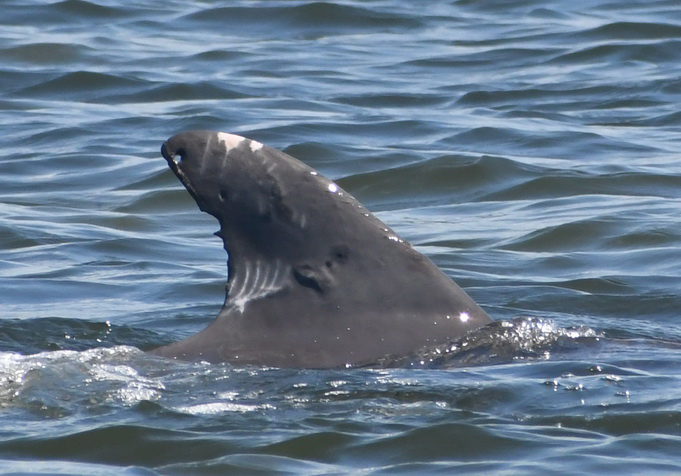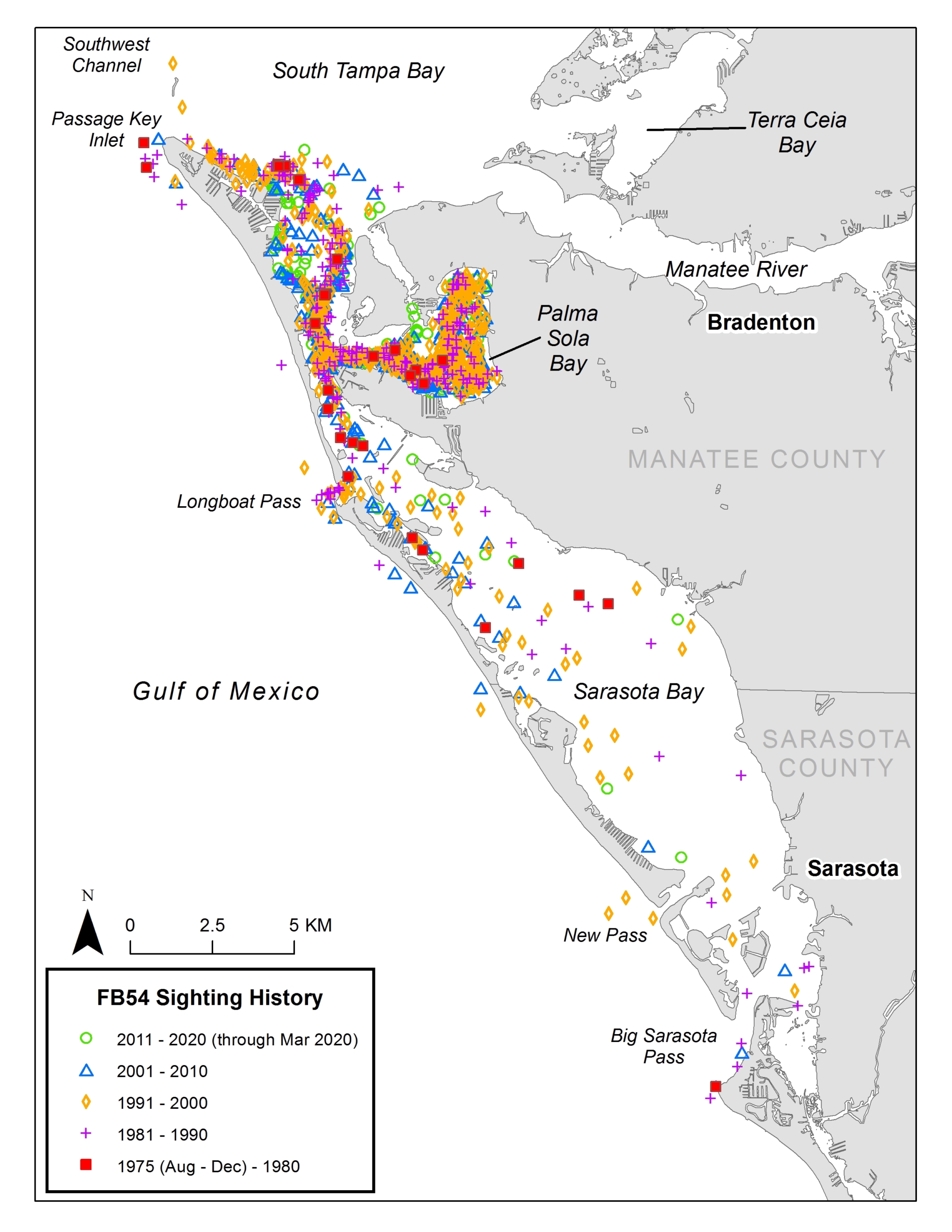Dolphin FB54
Stats
Name: FB54
Sex: Female
Born: 1971
Presumed Dead: 2023

A Dolphin’s Life
FB54 was born in 1971. She has not been observed since November 2023 and is presumed dead. Until her death, she was the oldest-known Sarasota resident dolphin. FB54 was observed 1,551 times since we first met her in August 1975 — the second highest number of sightings for any dolphin in our catalog.
was observed 1,551 times since we first met her in August 1975 — the second highest number of sightings for any dolphin in our catalog.
She gave birth to eight calves, her last in 2012 when she was 41. That calf remained with her into 2020. As can be seen in the sighting map, her ranging patterns remained very stable over the nearly five decades we knew her. She used the entire community range, but the northern portion was her core area.
Thanks to our monthly photographic identification monitoring program (supported through the Charles and Margery Barancik Foundation), we know that one of her calves, born in 2000 and nicknamed Tricia, has given birth to three of her grand-calves.
Based on paternity analyses by Dr. Debbie Duffield, of Portland State University, we know that her son, Jocko, born in 1996, sired one grand-calf. These ongoing studies conducted by members of the SDRP team and its partners have allowed us to learn a great deal about the community of dolphins that call Sarasota Bay home.
A Dolphin’s Voice
A Special Note About the Audio Recording
In collaboration with numerous colleagues over the past 35 years, our dolphin communication research team has collected thousands of hours of acoustic recordings from members of the resident Sarasota bottlenose dolphin community, with a focus on individually distinctive signature whistles. Recordings have been made during periodic health assessments, when we are able to obtain high-quality recordings of known individual dolphins. We are currently in the process of systematically assembling a verified signature whistle catalog, with multiple samples from each of the approximately 1,000 unique recording sessions of almost 300 individual dolphins. Members of this collaborative team, and our student researchers, come from Woods Hole Oceanographic Institution, the University of North Carolina Wilmington, University of St. Andrews, and Hampshire College. Learn more about dolphin communication.
You can learn more about dolphin ranging patterns in this video with Dr. Randy Wells.
Catching Fish
How does technology help us study dolphin behavior? Take a look! Our collaborators from Woods Hole Oceanographic Institution and the University of St Andrews are simultaneously using drones (to record overhead video), and suction-cup DTAGs (which record sound and fine-scale movements for up to 24 hours and then automatically release from the dolphin) to get a more complete picture of Sarasota dolphin communication and foraging. Watch and listen as FB54 zeroes in on some mullet and uses a foraging tactic known as “fishwhacking” to stun and capture her prey. (Don’t forget to turn up your volume!)
In this video, FB54 (on the right) swims toward a small school of mullet, turns on her side while generating a fast “buzz” of echolocation clicks as she picks out a target and attempts to whack it with her tail flukes. Underwater audio was recorded by the DTAG just in front of FB54’s dorsal fin. She misses the first time, but makes contact on her second try, sending the fish flying through the air! You’ll hear her “buzz” once again as she heads over to catch the fish. Success!




